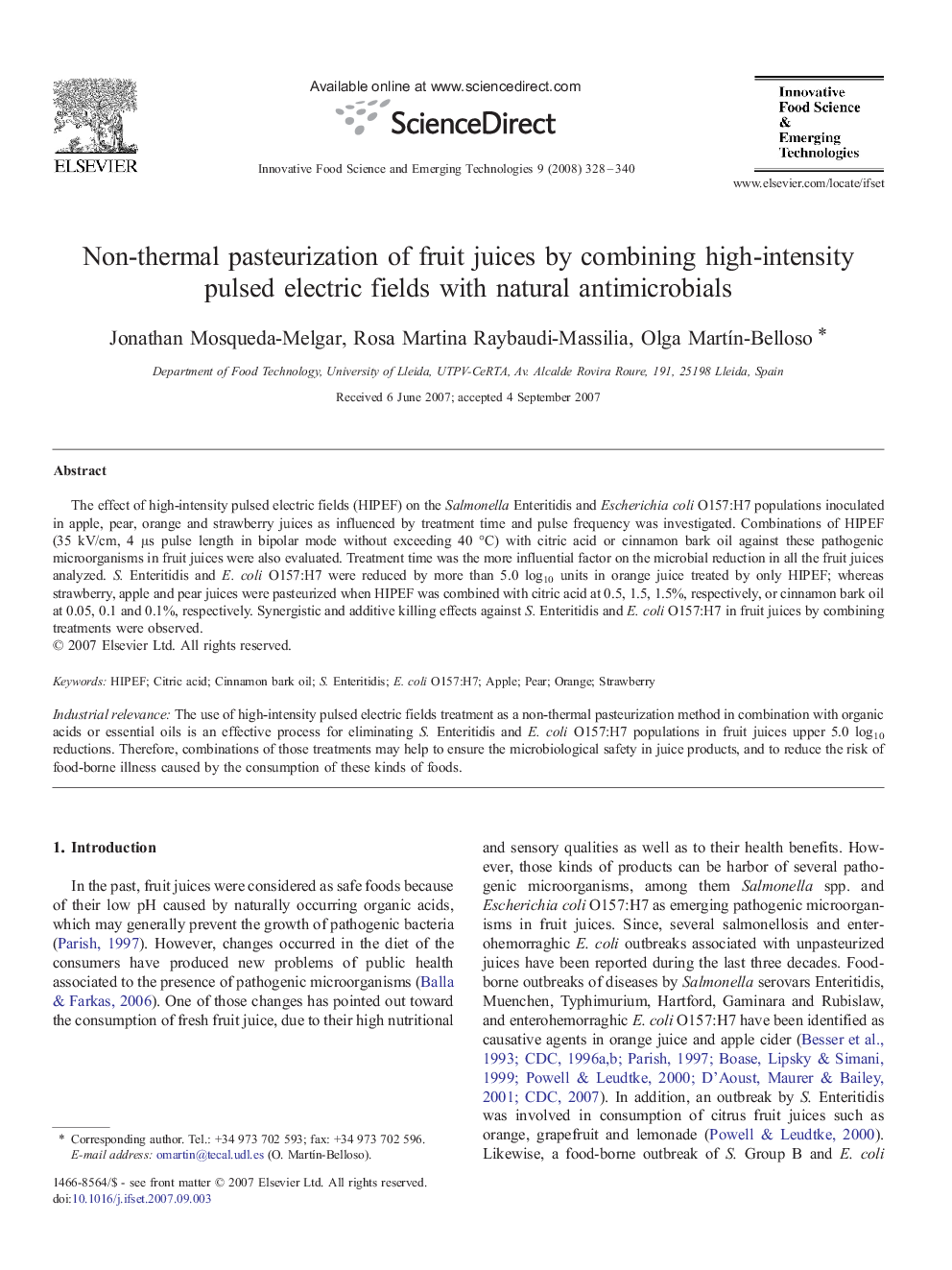| Article ID | Journal | Published Year | Pages | File Type |
|---|---|---|---|---|
| 2087421 | Innovative Food Science & Emerging Technologies | 2008 | 13 Pages |
The effect of high-intensity pulsed electric fields (HIPEF) on the Salmonella Enteritidis and Escherichia coli O157:H7 populations inoculated in apple, pear, orange and strawberry juices as influenced by treatment time and pulse frequency was investigated. Combinations of HIPEF (35 kV/cm, 4 μs pulse length in bipolar mode without exceeding 40 °C) with citric acid or cinnamon bark oil against these pathogenic microorganisms in fruit juices were also evaluated. Treatment time was the more influential factor on the microbial reduction in all the fruit juices analyzed. S. Enteritidis and E. coli O157:H7 were reduced by more than 5.0 log10 units in orange juice treated by only HIPEF; whereas strawberry, apple and pear juices were pasteurized when HIPEF was combined with citric acid at 0.5, 1.5, 1.5%, respectively, or cinnamon bark oil at 0.05, 0.1 and 0.1%, respectively. Synergistic and additive killing effects against S. Enteritidis and E. coli O157:H7 in fruit juices by combining treatments were observed.Industrial relevanceThe use of high-intensity pulsed electric fields treatment as a non-thermal pasteurization method in combination with organic acids or essential oils is an effective process for eliminating S. Enteritidis and E. coli O157:H7 populations in fruit juices upper 5.0 log10 reductions. Therefore, combinations of those treatments may help to ensure the microbiological safety in juice products, and to reduce the risk of food-borne illness caused by the consumption of these kinds of foods.
